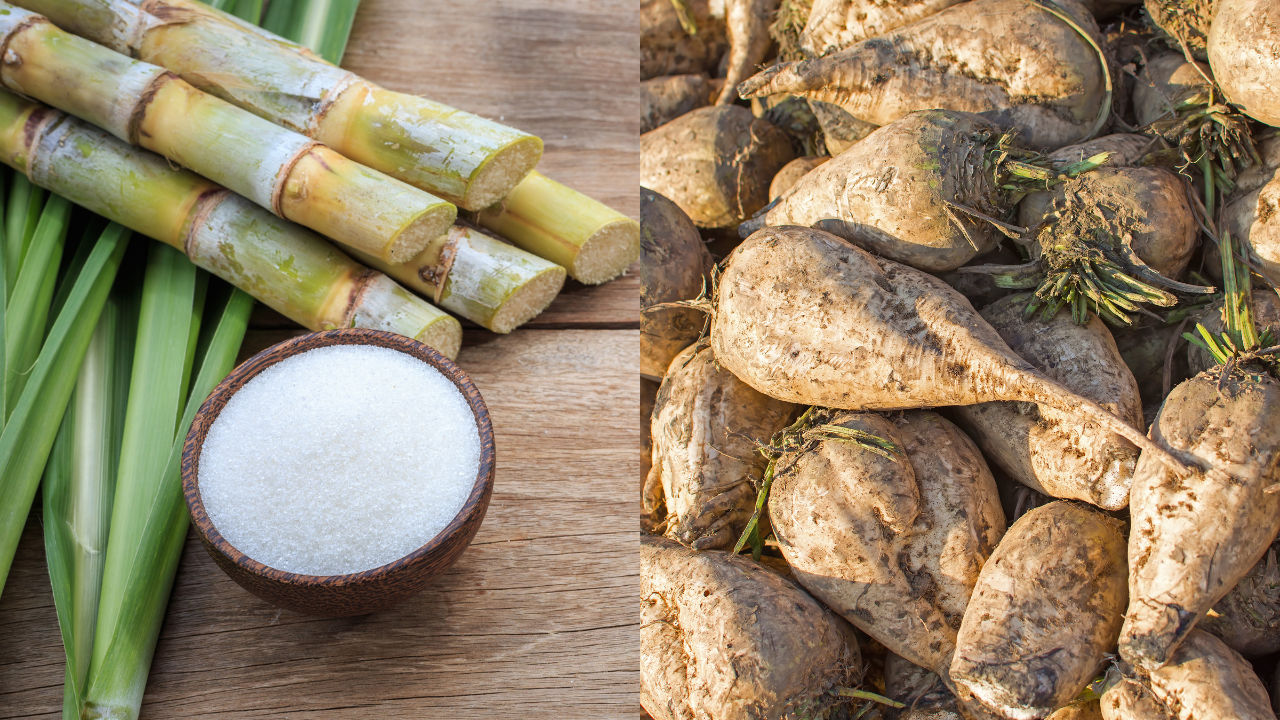Some people prefer beet sugar vs cane sugar for its claimed health properties and purity.
Some people prefer beet sugar vs cane sugar for its claimed health properties and purity.
Blog Article
Discover the Uses and Conveniences of Beet Sugar Vs Cane Sugar in Your Daily Diet
Checking out the unique top qualities of beet and cane sugar reveals more than simply their sweetening capacities; it highlights their unique impacts on health and wellness and cooking arts. Beet sugar, recognized for its subtle flavor, is typically preferred in fragile treats, whereas cane sugar, with its hint of molasses, adds richness to robust dishes. Each type holds its own dietary account and glycemic ramifications, welcoming a much deeper understanding of their duties in a well balanced diet and sustainable consumption methods.
Origin and Manufacturing Processes of Beet and Cane Sugar

The distinct climates and dirt types required for expanding sugar beetroots and sugarcane contribute to differences in their cultivation techniques and geographical circulation, influencing the business economics and sustainability of their manufacturing. beet sugar vs cane sugar.
Nutritional Contrast Between Beet Sugar and Cane Sugar
In spite of stemming from various plants, beet sugar and cane sugar are nutritionally extremely similar, both primarily being composed of sucrose. Each gives concerning 4 calories per gram, converting to approximately 16 calories per teaspoon. Structurally, both sugars are made up of roughly 99.95% sucrose, with marginal amounts of various other compounds like moisture and trace element, which do not substantially change their dietary profiles.

Eventually, when choosing in between beet sugar and cane sugar based upon nutritional web content alone, both offer the same benefits and downsides as they are essentially kinds of the same molecule-- sucrose, offering fast power without other nutrients.
Influence on Health And Wellness: Glycemic Index and Caloric Material
Exploring additionally right into the impacts of beet sugar and cane sugar on pop over to this web-site wellness, it is essential to consider their glycemic index and caloric content. Both sugars are identified as sucrose, which is composed of sugar and fructose. This composition leads them to have a comparable effect on blood sugar level levels. The glycemic index (GI) of both beet and cane sugar is around 65, categorizing them as high-GI foods, which can create fast spikes in blood sugar degrees. This is a crucial aspect for individuals managing diabetes or those trying to maintain their power degrees throughout the day.
Each sort of sugar contains about 4 calories per gram, making their caloric content matching. For those keeping track of calorie intake, especially when taking care of weight or metabolic health conditions, understanding this equivalence is important (beet sugar vs cane sugar). Too much consumption of any kind of high-calorie, high-GI food can add to health concerns such as excessive weight, heart condition, and insulin resistance.
Environmental and Economic Considerations of Sugar Manufacturing
Beyond wellness effects, the manufacturing of beet and cane sugar also elevates significant environmental and financial issues. Sugar beet cultivation often tends click this link to call for cooler environments and has a reduced geographical impact compared to sugar cane, which thrives in exotic areas.
Additionally, using pesticides and fertilizers in both beet and cane sugar cultivation can lead to dirt deterioration and air pollution, additional influencing biodiversity and regional water bodies (beet sugar vs cane sugar). The option between cultivating sugar beet or cane frequently rests on neighborhood ecological conditions and economic elements, making the sustainability of sugar manufacturing an intricate problem
Culinary Applications and Taste Differences
While the ecological and financial aspects of sugar production are indeed substantial, the option between beet and cane sugar also influences culinary applications and taste profiles. Beet sugar, originated from the sugar beet plant, is recognized for its extremely neutral taste. This makes it a versatile active ingredient in cooking, where it does not alter the flavor of various other components. It dissolves promptly and is optimal for usage in cakes, cookies, and pastries.
Walking stick sugar, extracted from sugarcane, usually keeps molasses traces, which present an unique richness and deepness. This minor molasses flavor improves the intricacy of baked goods, sauces, and marinades. It is particularly preferred in products where a sugar touch is preferred, such as in brownies or gingerbread. The minor variant in moisture web content in between beet and cane sugar can affect the texture and uniformity of recipes, making cane sugar a preferred selection for details dishes that benefit from its special residential properties.

Conclusion
Finally, both beet and cane sugar have distinctive origins and manufacturing procedures, using similar dietary profiles with small distinctions in sodium web content and flavor. While their influence on health and wellness, especially pertaining to glycemic index and calories, is comparable, the selection between them commonly steams down to environmental, important site financial factors, and specific cooking demands. Understanding these facets can assist consumers in making educated decisions that align with their health goals and taste preferences.
Report this page